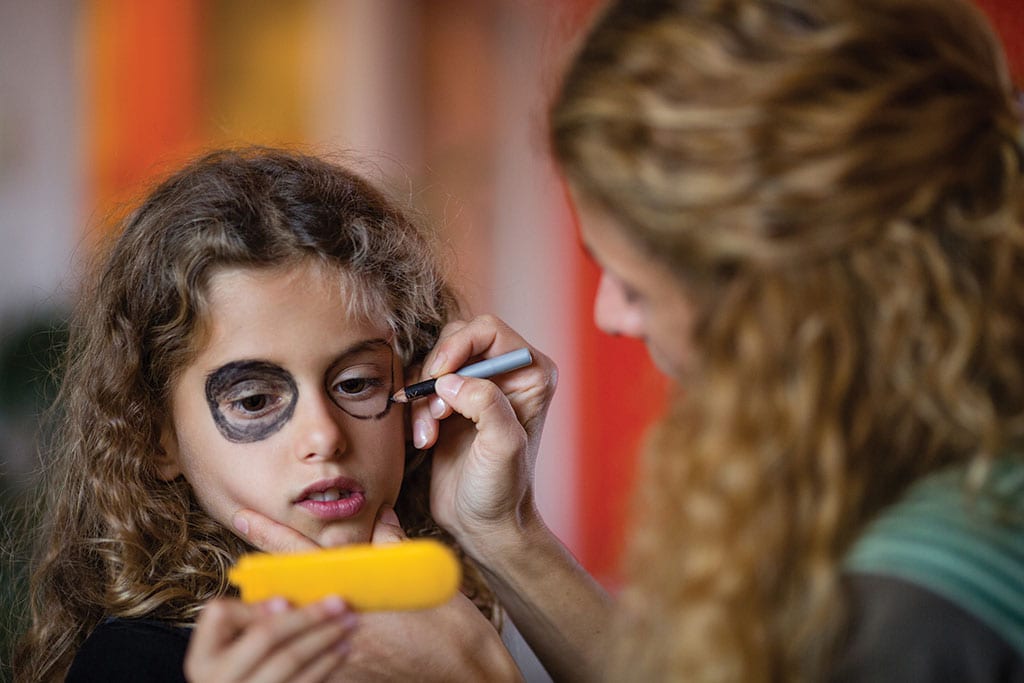ABA Therapy Uncovered: What You Need to Know
Children with autism spectrum disorder (ASD) don’t think, communicate, behave or interact like neurotypical ones. So, when parents receive an ASD diagnosis for their child, it can be overwhelming to understand what to do next. Applied behavior analysis (ABA) therapy is one step that many families have decided to take.
ABA is a therapy with roots in the 1960s. It has evolved over the decades, and in the past several years has become a common treatment option for ASD. “In any field, especially in any field in science, things will change over time,” says Dr. Caitlin Delfs, the Founder and Executive Director at Village Autism Center. “Now, we focus a lot on assent, not only making sure the parents consent, but that the children also want to be here and learn the skills we’re teaching.”
“Kids with autism are not learning from their parents, not because the parents aren’t doing what they’re supposed to, but because they need to be taught differently,” says Georgia Center for Autism and Developmental Pediatrics’ Dr. Mark Moncino. “ABA can help them learn the skills they lack. ABA is a positive, formulative experience to teach skills.” Many centers in the metro Atlanta area provide these services that, according to Moncino, are a broad-spectrum approach to any sort of behavioral challenge that teaches children the skills they lack.
As is true with other therapies, the earlier ABA is implemented, the more effective it will be.
“Caregivers should not wait in starting the process of finding a therapy provider for their child,” says Dr. Rachel Yosick, the Program Manager for Marcus Autism Center’s ABA Therapy Program. “It’s important to get intervention as quickly as possible, so persistence matters. Call providers, get on multiple waitlists and follow up with them to get information about services.”
Table of Contents
Finding the Right Fit
Clinics providing ABA services may have lengthy waitlists since the therapy caters specifically to the individual’s needs. These goals are developed for each child and are regularly assessed.
“We take an overall perspective of what the child needs and what their progress looks like,” says Corrinah Martin, the Center Director for Applied ABC’s Georgia Clinic. “Targets are updated frequently as the child masters, maintains and generalizes skills. We work with the family and the child to develop to the point where they accomplish their goals and need less support in certain areas.”
Partnership between the parents and therapists is key to getting the most out of ABA therapy in the short- and long-term.
Delfs recommends concentrating on services that will best fit the needs of the child and the family unit as a whole. “Some ABA companies specialize in reducing problem behavior — if that is the biggest issue for the family, that is the type of clinic the family should seek out,” she says.
Make sure the company is providing clear communication from the beginning and ask questions that will give a full picture of what the experience will be with the provider. Think about how many staff members will be assigned to the child, how the provider collaborates with other professionals and how often the case manager plans to meet with the care team. According to Delfs, these can all be quality indicators of whether a clinic is the right fit for a family.
“Ask the provider how many hours per week does my child need for ABA and why? Every provider should have a clear answer based on the child’s assessment and their expertise,” Yosick says. “Parents should feel confident about the answers they receive.”
“Most ABA providers truly want the family to find the services that will be the best fit for them,” Delfs says. “Some organizations serve individuals of all ages, while some specialize in early intervention. Age can be a barrier in terms of accessing services, along with finding a company in network with your insurance. ABA therapy is a huge commitment both for the child and the entire family, so it is crucial for caregivers to find the organization that is able to provide the level of quality service your child needs.”
One Size Does Not Fit All
Since each person with autism is unique, there is no way to predict how long ABA therapy will last. “Some individuals are in ABA for a year, and some are lifelong, starting from early intervention to adulthood. It really varies,” says Emela Sadiku, a Board-Certified Behavioral Analyst (BCBA) at Circle Care Services. “Therapy depends on the child’s functioning level and how many hours are needed.”
Treatment goals build necessary skills, and the therapist ensures those skills are utilized across different situations.
“Whatever we’re teaching, we want to know if the child is able to understand these goals in this environment and in other environments,” Sadiku says. “How can we better meet them at their level, and then, increase their independency on a daily basis?”
The skills built in ABA should transfer to real-world situations and carry the child into adulthood.
The Parental Perspective
Parents and caregivers play an important role in ABA therapy, and these parents have seen the benefits firsthand.
Sanaipei Ntimama’s son, Kalel, was diagnosed with ASD just before he turned 2. When he was 3, the family started ABA therapy. It was a big commitment for them as they made the 17-hour flight from Kenya to Atlanta to attend sessions.
“Kalel is able to follow instructions; request items; feed himself and eat solid foods; dress himself; play with toys and even read a few words,” she says. “It didn’t take long for us to see the positive effects on Kalel, and it’s also fun for him, as he gets to learn through play and be rewarded for all his hard work.”
India Thomas’s daughter, Angel Rae of Tucker, was diagnosed with autism at age 2. A friend had a child who was around the same age, and Thomas could see the difference between the two children. After researching ABA for herself, Angel Rae has recently started ABA at age 4, and Thomas is already seeing a difference in her behavior.
“She can feed herself; she has a lot more independence; she follows directions; she’s saying more words. She’s saying bye-bye and doing the hand gesture, and she’s doing that every day when the therapist leaves. That was a big deal for me,” Thomas says. “I’m learning a lot as well. Instead of being confused about how to help when she stems, I know now to hand her something or get her to clap. The small victories are big victories. I’m looking forward to my daughter’s growth.”
Martin also has personal experience with ABA therapy, as her eldest daughter has autism. She recommends conducting your own research, including going on tours. These places offer a level of transparency that is reassuring. She also notes taking location into account as you want to engage in therapy consistently, making convenience an important factor.
“As a parent, even though I was in this field for years before my child was diagnosed, in each environment and with each therapist, I learned something new. As a parent and as a professional, I love the collaborative, integrative approach to ABA therapy,” says Martin. “To other parents out there, know there’s hope. There are solutions, and there’s support.”
What Is ABA?
ABA – applied behavior analysis – is a therapy based on the science of learning and behavior. It focuses on understanding how behavior works, how behavior is affected by the environment and how learning takes place.
“ABA therapy is a science that tries to apply what decades of research has shown about human behavior and why we do what we do,” Yosick says. “It’s designed to help kids develop certain behaviors and skills to improve quality of life. It can look and feel different depending on the specific approaches to teaching those skills and how much those therapies integrate child development.”
ABA is taught using Discrete Trial Training (DTT) and Pivotal Response Training (PRT). DTT uses step-by-step instructions to teach a desired behavior. PRT works to improve pivotal skills to help the patient learn other skills.
“With DTT, you are targeting specific skills. For example, the therapist holds up a picture of a car and asks, ‘What’s this?’ The kid says, ‘Car;’ the therapist says, ‘Great job,’ and we repeat that. PRT focuses on teaching skills that are pivotal in the development of other skills rather than teaching individual targets,” Delfs says. “Any good ABA provider should use a variety of strategies. One size does not fit all, not with autism and definitely not with ABA.”
ABA therapy works to encourage the child to repeat the behavior she’s learning, and the child is rewarded for her response. “The BCBA is going to focus on what is motivating for this child at this moment as a reinforcer to make sure target behavior happens again,” Delfs says. “It’s our job to identify what is motivating in the moment and use that in our sessions. This will change across clients but also across days and even teaching trials.”
How Does ABA Work?
“There are behavioral principles that guide us in addressing socially significant behaviors,” Martin says. “Our two priorities for clients are decreasing problem behaviors and increasing skills.”
Each individual receives a customized plan to teach skills. Therapy needs may include building language, adaptive, behavioral and communication skills, such as teaching a child how to play with others; offering an alternative to a self-injurious behavior by building coping skills; learning to use utensils independently during mealtimes; or reading a visual schedule in order to transition from activity to activity.
“We interview caregivers, asking milestone and history questions,” says Sadiku. “Depending on the child’s age, we do different assessments to see where they are with their skills and behaviors. We also do parent goals – what do you want to see from your child next week, next month, a few years from now? We ask parents what kind of personality the child gravitates to, because we want to place people in sessions to make sure that fit is perfect for them.”
Clinics offer services in different settings, including home-based and in-center services. Some centers may offer peer groups to help increase social skills. In-school services offer support to teachers and can help the client implement appropriate classroom behaviors. Community services teach skills needed to thrive while out and about, such as how to order off a menu.
“We support families by trying to eliminate barriers to receiving services,” Martin says. “Our BCBAs collaborate with parents and are able to support and observe what the antecedent is to episodes across different environments.”
The right type of ABA therapy will take into account the developmental abilities of the child. For example, a young child with autism, like a young, neurotypical child, will need to take naps, so the therapy schedule should take that into account.
“Research has shown that the best intervention approaches for kids with autism should incorporate child development,” Yosick says. “If we meet the child where they’re at developmentally, we’re giving them the scaffolding they need to meet the next step.”
Caregiver involvement in ABA therapy is important, and some insurance companies may even cover parent training sessions. Parents should feel encouraged to participate in therapy and to increase the child’s learning opportunities in other environments.
“The BCBA will find time to meet with parents to discuss parent goals, and parents also will have goals to follow,” Sadiku says. “BCBAs target every little piece to make the family’s lives easier and ensure treatment goals are being targeted, not just in sessions but outside as well.”
As Yosick notes, “We’re setting up the environment in specific ways to cater to how the child is more likely to use skills in the future.”









